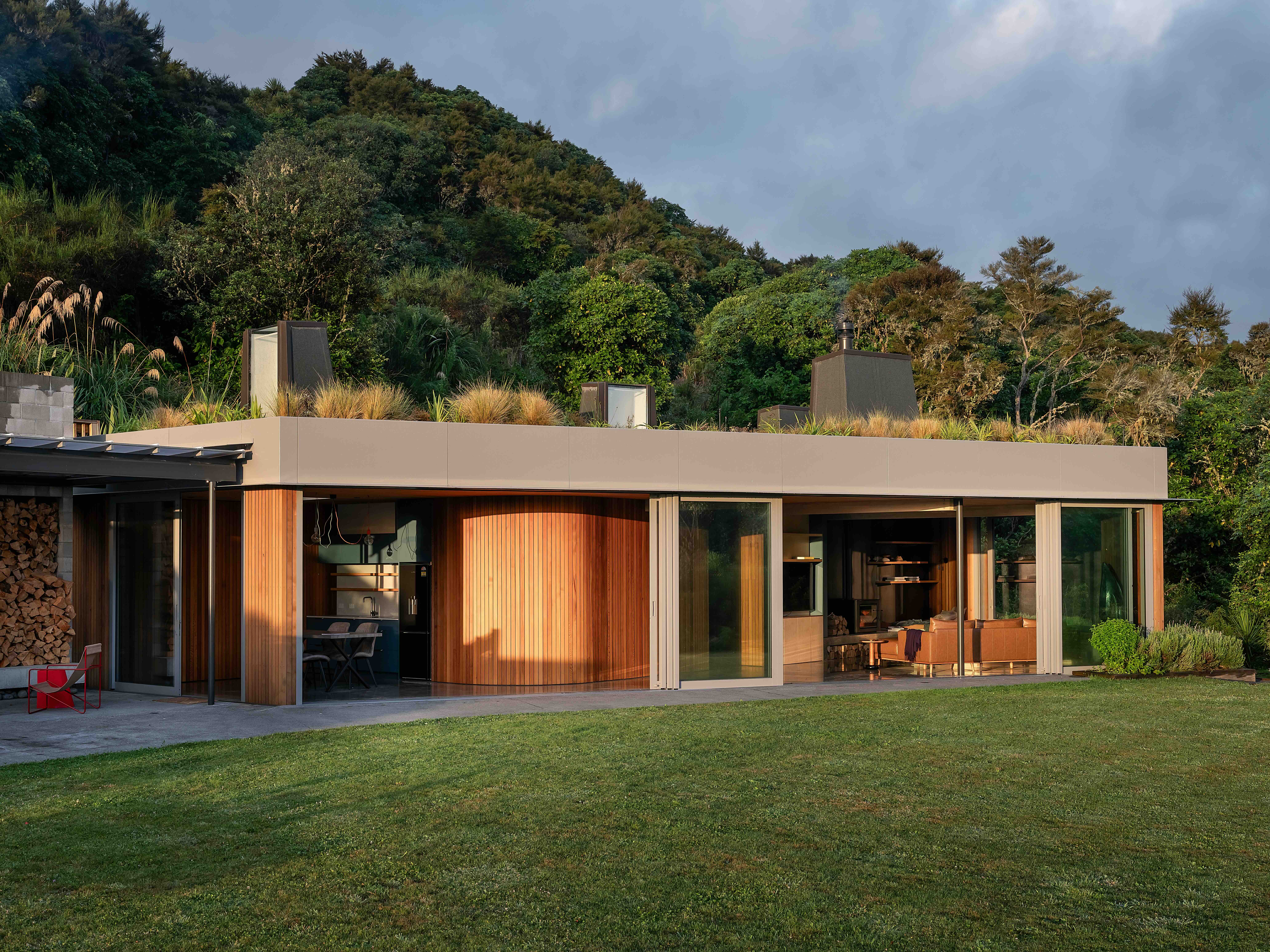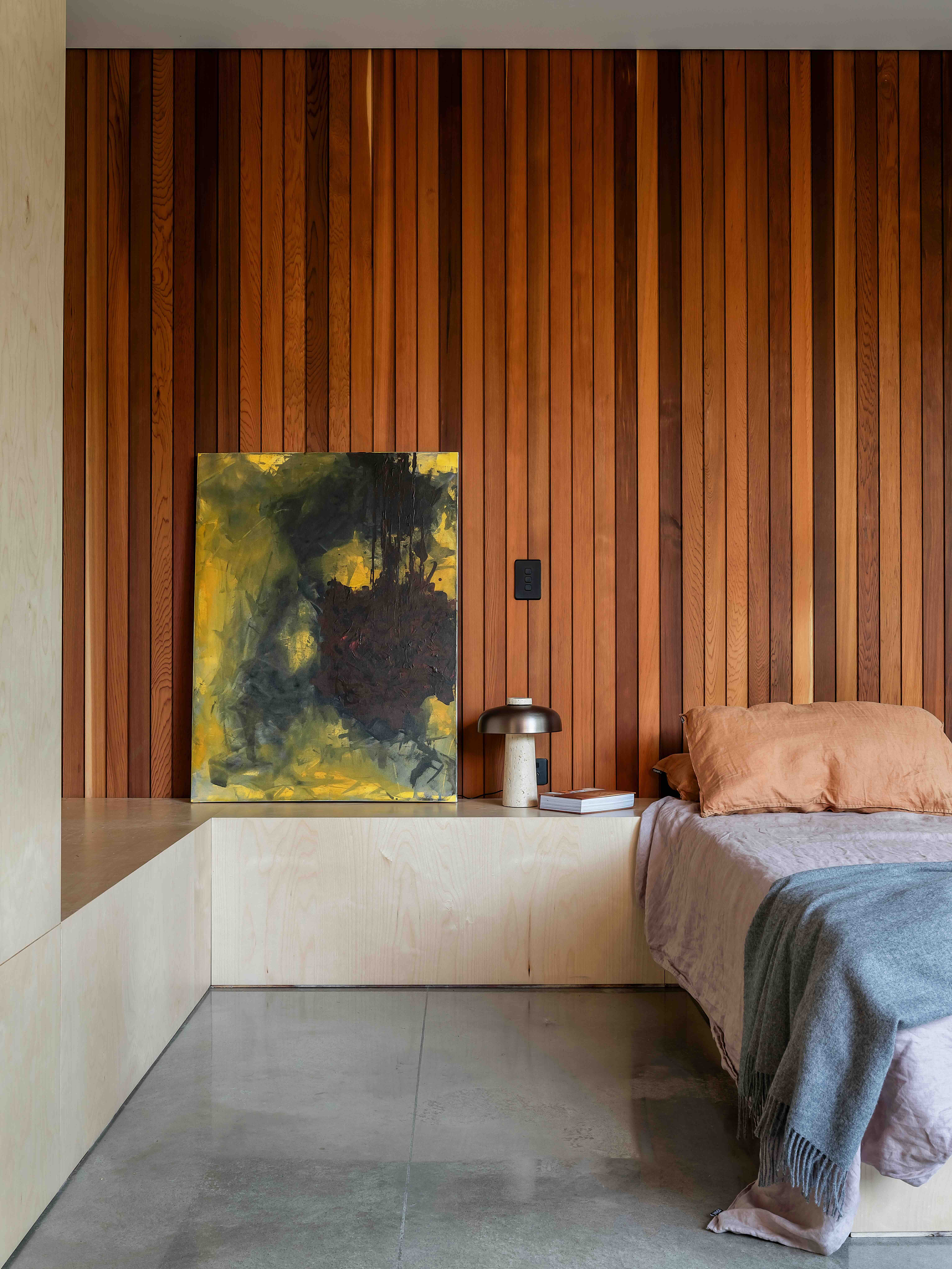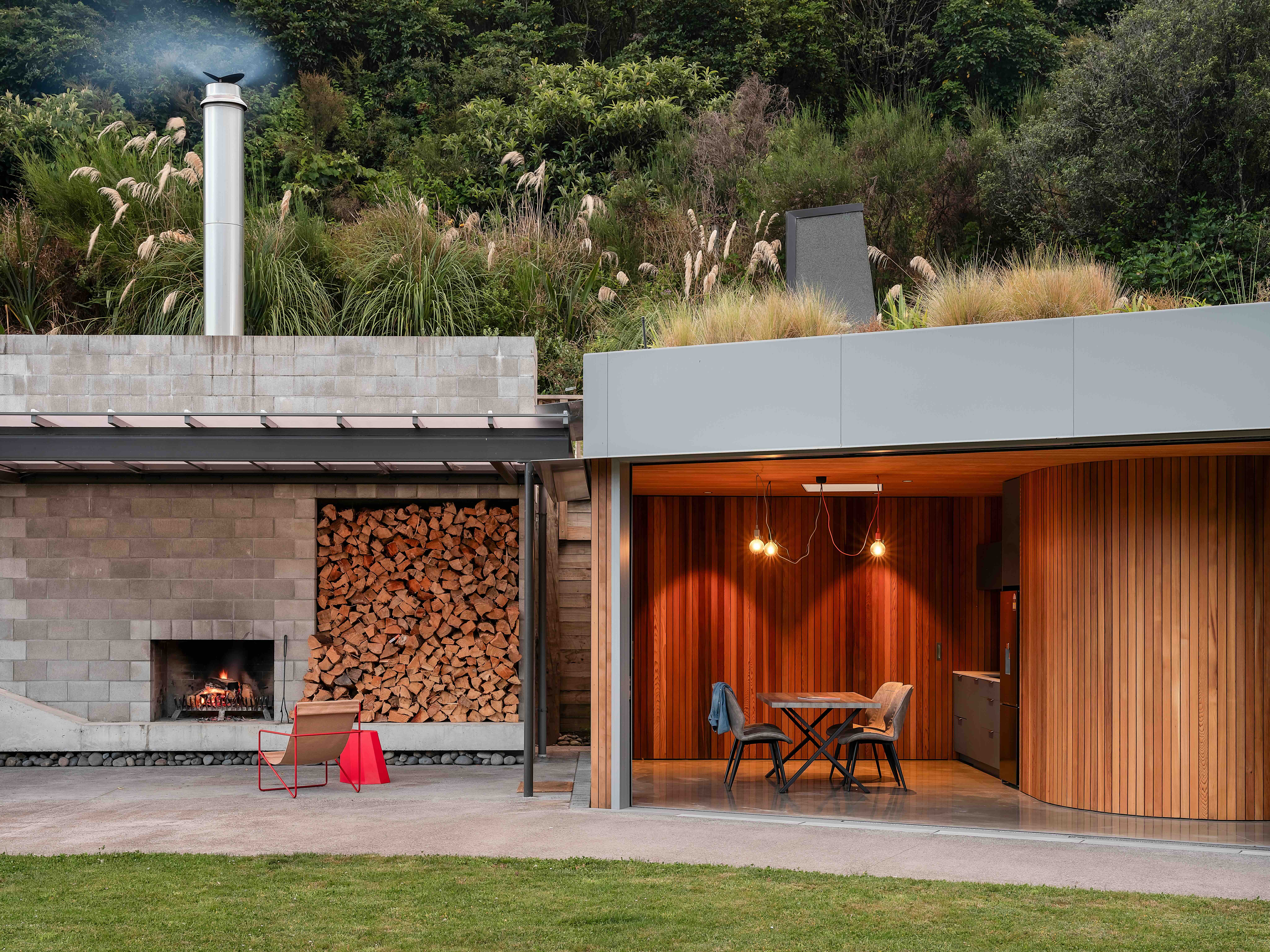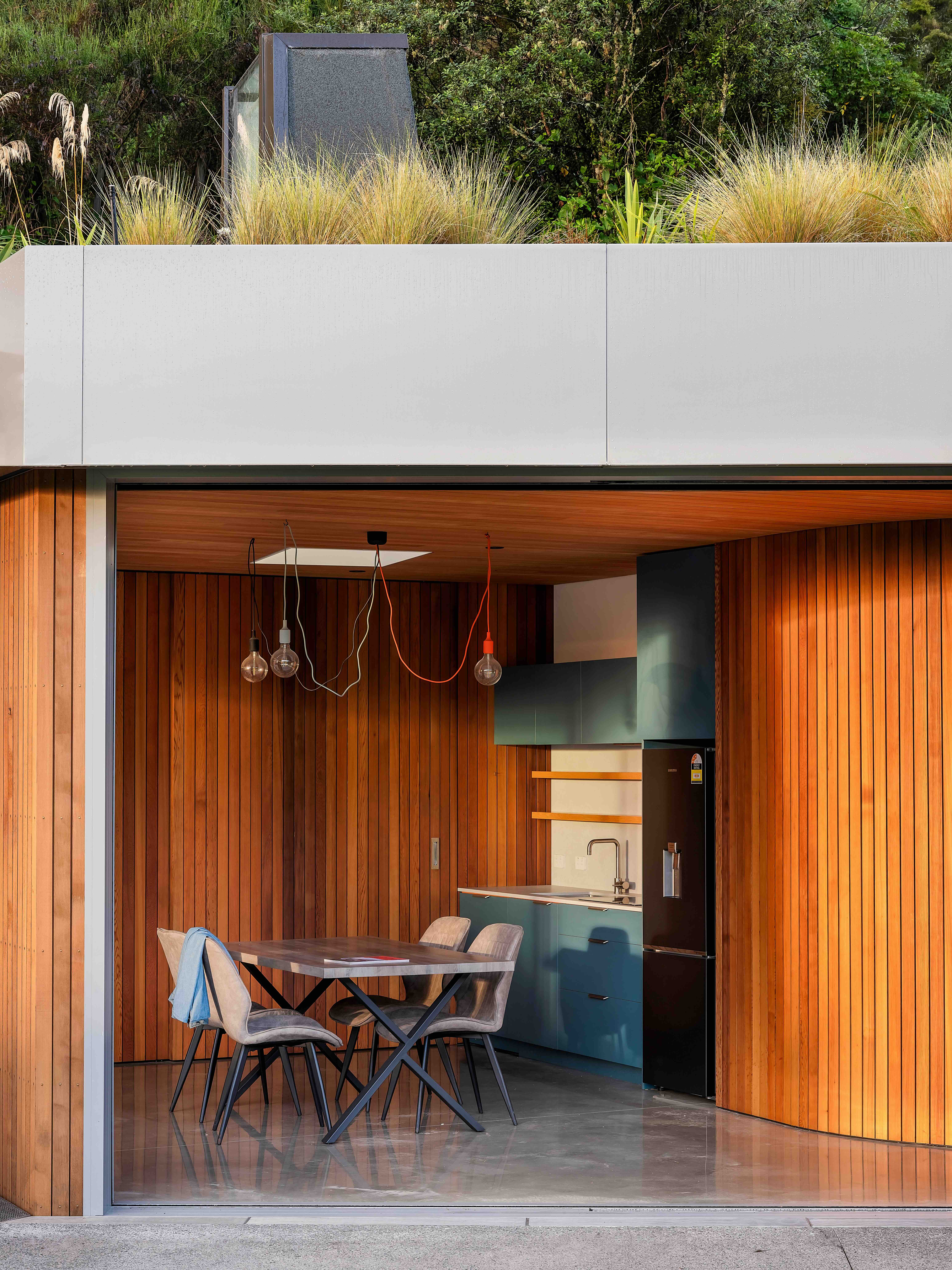


There are a number of well-worn ways to draw natural light through the roof of a home. Clerestory windows, skylights, solar tubes and light wells are common practice. But glowing lavender “light stalks” that pop up through a living roof like otherworldly periscopes? Not so much. This characteristically offbeat invention by Bossley Architects was one of the first features that drew Simon Dumble of Beechtree Building to this project. “It caught my interest immediately,” he says. “It had difficulty, quirks and all of those parts that make a home unique and interesting. The parts that make you stand back at the end and be proud of what you’ve put together.”
Based in Taupō, the Beechtree team has built a reputation for bespoke architectural homes, and this three-bedroom bach – all angular lines and quiet cleverness – was right in their wheelhouse. Laid out in a triangular footprint, backed into a native-bush-covered hill, the design was packed with idiosyncratic features, including its plant-topped roof, aluminium eyebrow and curved internal wall. The restrained material palette called for an uncompromising finish that allowed the architecture and environment to shine. And it all began from the ground up.
The concrete floor was custom-tinted and burnished to a seamless, shiny finish. Due to the site’s remote location, roughly an hour from Taupō township, the logistics and timing of the pour were critical. But that wasn’t the hard part. “The difficulty was that the floor had to go down first,” explains Dumble. “Before framing, before anything else could happen, the flooring went in and the team had to work on top of that and protect it for the entire, year-long build.” Their efforts could have been thwarted by a rogue, rusty nail – yet the floor remains pristine. “No dings, drops or scratches, there was no room for mistakes,” Dumble says. “I really enjoy this level of fine finishing – the craftsmanship side of a build. The entire team is on board and well versed with the details it requires.”
The results speak for themselves. Take the internal shiplap cedar walls. Inspired by traditional, timber-lined fishing huts, the look feels loose and natural, a spontaneous patchwork of tones and grains. But look a little closer. “We don’t just slap up a board here and a board there, we lay them all out first, arranging and rearranging them so the colours blend smoothly,” says Dumble. As is often the case, an effortless appearance takes considerable care.
The house is a beautiful piece of architecture that blends sympathetically into its environment. To combat tricky ground conditions and an encroaching hillside, it’s anchored into the sandy slope with a significant retaining wall. While unexpected in the lakeside setting, it feels perfectly at ease, opening out to a sheltered fireplace and flat lawn that serves the outdoor lifestyle of its owners. “I could instantly tell that this was going to be a very interesting project; the design had a lot of flair and some really neat features,” says Dumble. “I knew it could be a challenge and I was up for it – it’s the challenge that keeps me going. These bespoke difficult jobs, they suit me to a tee.”
This case study was produced in association with Beechtree Building.
Project type:
New-build
Floor size:
152m²
Project type:
New-build
Floor size:
152m²
Construction:
Timber frame with green roof
Green roof:
Natural Habitats Landscapes
Cladding:
Cedar Shiplap and corrugated Colorsteel
Flooring:
Concrete
Location:
Lake Taupō





Related Stories: